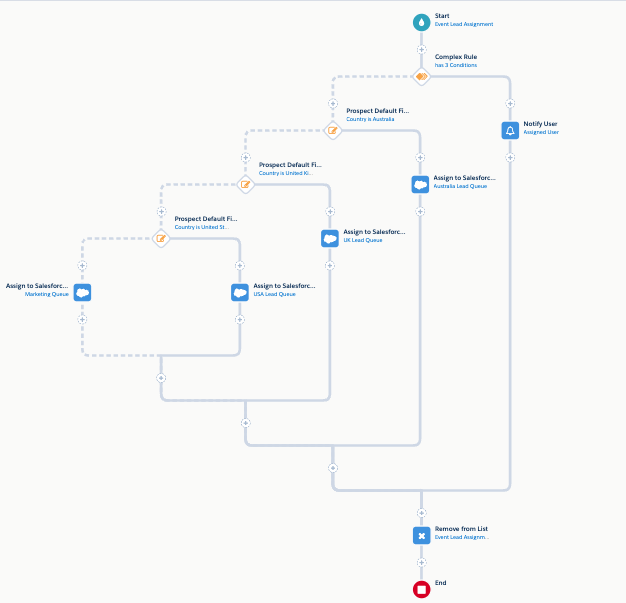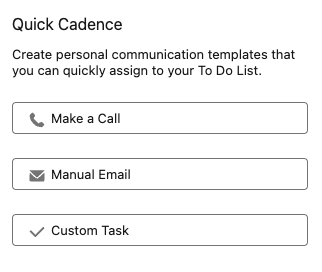Pardot Segmentation Techniques – Prospects Can Enrich Their Own Data
- July 30, 2021
- Pardot Segmentation, Salesforce Ben | The Drip

In marketing automation, good content isn’t enough – you need to ensure you send the right message to the right person. This is segmentation, simply put, dividing your database into ‘buckets’ of prospects that share certain characteristics, and so, are likely to be interested in the same content.
Segmentation is a struggle for many marketers. Most segment their marketing databases in conventional ways, based on industry, job title, or geographic location.
Those are options – but I believe there’s a better way to segment your data that not only gets you better results, it also makes your prospects and customers like you more. This alternative approach has more to do with the prospect’s motivations (their reason for seeking out a product or service), than simply demographic “attributes”.
In this guide, you’re going to learn how to use prospects’ own words to create segments that will lead to much more fitting messaging, higher conversion rates, and happy customers. I ran this segmentation project with a leasing company, and have included insight on how we made it happen.
You don’t know your customer well enough
The reason you’re struggling with segmentation is likely the same as why you struggle with other things like positioning or messaging: you don’t know your customer well enough.
I’m not repeating what’s been said thousands of times before – this is a fact that I’ve seen consistent across the organizations I’ve consulted for: marketers rarely talk to their prospects and customers.
Instead, defaulting to ‘cookie-cutter’ segmentation options is commonplace. Some of these can absolutely work (eg. geographic location), but it’s hard to do proper personalization if you don’t know why a person is even engaging with your company in the first place.
Introducing the 6-Step Self-segmentation Technique
Empathic segmentation is made possible by gathering information from your database by asking for it. When prospects share this information, you can begin to spot common phrases. Eventually, they will be routing themselves into their appropriate segments thanks to their answers and Pardot automation, with little effort required from you.
In Pardot, segments can be Pardot lists. More importantly, what you’ll end up with is a set of custom fields and values that will work to segment prospects in the future, too.
Now, without further delay, here’s my 6-step process for how I create relevant segmentation for any prospect database:
- Pick a survey tool
- Create meaningful questions
- Select a segment to survey
- Analyze the results, identify patterns
- Repeat by selecting another segment to survey, if necessary
- Convert identified patterns into fields and values (in Pardot)
If you’re just starting out, the 6-step approach I will cover won’t work as well if you don’t have a database of customers and prospects. However, you can start by introducing self-segmentation opportunities into your customer journey/marketing experience (skip to section) – in fact, everyone should do this so that even new prospects will enrich their own profiles.
Step 1: Pick a survey tool
There are a couple of ways to collect prospect motivations, in mass, using surveys.
- There’s a myriad of survey tools on the market; personally, I recommend Typeform.
- Alternatively, you can create a regular Pardot form (provided you are in a position to create the necessary fields to capture the data, ie. you have the correct permissions).
Note: it’s not necessary to have the survey tool integrated with your marketing automation platform.
Step 2: Create meaningful questions
In order to identify motivations from your audience, you need to ask them smart questions. This is the hard part.
- Questions must be open-ended. You want THEIR WORDS.
- You need to phrase the questions in a way that’s not suggestive (no leading questions).
There are four specific areas in relation to your product/solution you will want to cover:
- WHO are they? You want to figure out who your customer is.
- WHY are they here? What are they looking for?
- What are they doing NOW? What’s their current situation and why is it not working for them?
- What does TOMORROW look like? I.e. If they had a solution, what would that look like, how would it change their lives?
Real-life example:
I ran this segmentation project with a leasing company, which sold lease contracts (duh), but they also started selling a SaaS solution, where companies could manage their fleet of cars and travel budgets.
Here in the Netherlands, companies don’t just issue cars; it’s common for employees to be given a budget, then choose how to spend it whether a car lease, train pass, use their own car, etc.
This organization had no idea what motivations meant customers choose one solution over the other. So…we asked! Some of our questions were:
- What industry are you in?
- What’s your job title and what do you do in your company?
- What’s the number one challenge you’ve got when it comes to travel and mobility in your company?
- How are you going to be tackling this challenge?
- What are your priorities for the next 12 months in relation to the challenge you just described?
- What happens if you don’t fix this problem? What will it mean to you, and what will it mean to the company?
- What happens if you DO tackle this challenge? What will life look like?
As you can see, we were trying to figure out what the inner motivations and problems were.
By using (mostly) open questions:
- You’ll see patterns emerge. People will say the same things, or at least there will be answers you can group together (I’ll show you this soon).
- You’ll get the exact words your contacts use to describe who they are, and what they’re trying to accomplish. Golden information for a marketer!
Note: you don’t have to only use open questions. If you know something has set values, is a yes/no question, feel free to go with that.
Now, over to you! Sit down with your team and come up with some proper questions.
Step 3: Select a segment to survey
You might be wondering who we asked. Let’s get into that.
You don’t want to survey everyone in your database (unless your database is really small). Remember, you’re going to be analyzing every single submission, so if there are hundreds…yeah.
Once you’ve used this 6-step approach the first time, you will then survey the rest of your database to route them into the segments you’ve defined and finalized. You can’t survey everyone twice, it’s annoying.
Who do you survey? I recommend taking a segment of contacts that aren’t customers yet. You want to find out what prospects need, who aren’t paying you yet!
Read more: Segmenting Prospects From Customers in Pardot
You could survey customers, too…
If you operate on a subscription model, you have to find out why they keep paying you! However, you should survey customers separately from prospects, and with slightly different questions (eg. what’s the #1 reason you remain a customer?)
Surveying prospects and customers is a great way to sharpen your positioning. Is the #1 challenge your prospects have comparable to the #1 reason your customers keep paying you? If not, you need to get different prospects, or change your product.
Real-life example:
We started with 200 contacts, and then did another 200, and then another. That gave us about 200 replies, which is a good sample size (and plenty to analyze!)
“How do you get people to fill out a survey?”
Excellent question! I recommend you offer something in return for their time – especially if they’re not customers, yet. For this customer, they had a print version of their annual car guide that we offered to everyone. Pick something worth having.
Step 4: Analyze the results, identify patterns
The survey results are coming in.
In a spreadsheet, I recommend creating several tabs based on your WHO, WHY, NOW and TOMORROW questions.
Read the answers you’ve received. As you read the answers, try to group them in columns. See what fits together. Do you see the same kind of answers pop up when it comes to people describing themselves? Put them in a column. Give the column a header that makes sense, considering the context. Then, if you see variations, put those in the next column.
You don’t have to be specific about creating a tab for every question you asked (though you can, if that helps you), nor do you have to use every answer in your survey. If you get the same answer repeatedly, don’t put every single one in your spreadsheet (just list it once).
What you’re looking for is patterns – ways of describing a problem, describing ambitions, or solutions. What you’ll end up with is a series of groups of answers.
Keep in the back of your mind that you’ll be condensing these answers into fields and values. Which fields could those be? What values could those be?
Step 5: Repeat by selecting another segment to survey
This step is optional, but crucial if you did not hit your expected response rate. 200 responses is a good sample size, so if your initial database segment didn’t give you enough feedback to work with, extend your segment, and repeat the process.
Step 6: Convert identified patterns into fields and values (in Pardot)
With your spreadsheet filled with groups of answers, all that rough material will become fields and values in Pardot.
Real-life example:
We created a dropdown/picklist field called “Motivation”. The answers we received around WHY people were looking for a solution came down to the following values:
- “Cost”
- “Employees”
- “Sustainability”
With another customer (a consumer product, a plastic-free soap company), asking the same question (WHY are you here?) we were able to drill down into the following categories:
- Passionate about green (people that would buy a greener product no matter the higher cost or trouble associated with it)
- Sensibly green (people that want a green product, but don’t want to pay more or want to go through too much trouble to use it)
- Health (people that are mainly into green products for health reasons)
Using these fields, we could start segmenting our database, email automation, and dynamic content.
For example, when subscribed to the car lease newsletter, people that preferred “sustainability” got different email content than those that preferred “cost”.
When sending out a blast for a promotion, the pain points we put in the email were dynamically inserted based on what their field value was; people with “Cost” as a motivator got to see arguments around that, versus people that cared more about “Employees”.
Introduce Self-segmentation into your Customer Journey/Marketing Experience
So, how do you get people to sort themselves into buckets?
Now, create a survey that is connected to your marketing automation platform. Instead of open questions, use only questions with specific answers (you’ll still need to offer some incentive for responding).
You can insert fields in many ways into your funnels:
- When people subscribe to your newsletter, ask them why they’re here. You can then immediately sort them into the right workflows.
- Create tracked links (Pardot Custom Redirects) to set field values when the prospect clicks. For example, in the confirmation email ask them a question where they click a linked answer.
- Progressive profiling in forms: show interesting fields, and not just ‘job title’! Ask someone what a possible solution should look like, what their priorities are.
You’ll find people are more inclined to answer these kinds of questions than give you a phone number. There’s a ‘BuzzFeed factor’ to your forms because it makes people think about their business in a new way. You’re also able to show, right off the bat, that you understand your customers.
Summary
Wouldn’t it be nice if you knew your content was hitting all the right spots? That you knew exactly what to send to which group of contacts for maximum effect? Well, that’s what this tutorial has been all about.
What are your prospects trying to achieve, what’s their motivation? What is the problem they’re trying to solve, what’s wrong with their world?
This Pardot article written by:
Salesforce Ben | The Drip
Lucy Mazalon is the Head Editor & Operations Director at Salesforceben.com, Founder of THE DRIP and Salesforce Marketing Champion 2020.
Original Pardot Article: https://www.salesforceben.com/the-drip/pardot-segmentation-techniques-prospects-can-enrich-their-own-data/
Find more great Pardot articles at www.salesforceben.com/the-drip/
Pardot Experts Blog
We have categorized all the different Pardot articles by topics.
Pardot Topic Categories
- Account Based Marketing (ABM) (7)
- Business Units (14)
- ChatGPT / AI (3)
- Completion Actions (5)
- Connectors (10)
- Custom Redirects (4)
- Data Cloud (2)
- Demand Generation (8)
- Dynamic Content (6)
- Einstein Features (12)
- Email Delivery (17)
- Email Open Rates (3)
- Pardot A/B Testing (2)
- Email Mailability (16)
- Do Not Email (1)
- Double Opt-in (2)
- Opt Out / Unsubscribe (14)
- Email Preferences Page (6)
- Engagement Studio (16)
- Industries (1)
- Non Profit (1)
- Landing Pages (9)
- Lead Generation (1)
- Lead Management (13)
- Lead Routing (3)
- Lead Scoring (16)
- Leads (3)
- Marketing Analytics – B2BMA (9)
- Marketing Automation (1)
- Marketing Cloud (3)
- Marketing Cloud Account Engagement (4)
- Marketing Cloud Growth (2)
- New Pardot Features (6)
- Opportunities (2)
- Optimization (2)
- Pardot Admin (64)
- Duplicates (1)
- Marketing Ops (1)
- Pardot Alerts (1)
- Pardot API (2)
- Pardot Automations (3)
- Pardot Careers (12)
- Pardot Certifications (4)
- Pardot Consulting (1)
- Pardot Cookies (3)
- Pardot Custom Objects (3)
- Pardot Email Builder (8)
- Pardot Email Templates (9)
- HML (6)
- Pardot Events (16)
- Pardot External Actions (1)
- Pardot External Activities (4)
- Pardot Forms (29)
- Form Handlers (8)
- Pardot Integrations (20)
- Data Cloud (1)
- Slack (1)
- Pardot Lead Grading (5)
- Pardot Lead Source (2)
- Pardot Lightning (1)
- Pardot Migration (1)
- Pardot Nurture / Drip Campaigns (1)
- Pardot Personalization (3)
- Pardot Profiles (1)
- Pardot Releases (18)
- Pardot Sandboxes (2)
- Pardot Segmentation (5)
- Pardot Strategy (7)
- Pardot Sync (2)
- Pardot Sync Errors (1)
- Pardot Tracker Domains (5)
- Pardot Training (3)
- Pardot Vs Other MAPs (4)
- Pardot Website Tracking (2)
- Reporting (22)
- Salesforce and Pardot (31)
- Marketing Data Sharing (2)
- Pardot Users (3)
- Salesforce Automation (5)
- Salesforce Flows (2)
- Salesforce Campaigns (20)
- Salesforce CRM (3)
- Record Types (1)
- Salesforce Engage (3)
- Salesforce Queues (2)
- Security and Privacy (1)
- Tags (3)
- The Authors (504)
- Cheshire Impact (9)
- Greenkey Digital (51)
- Invado Solutions (37)
- Jenna Molby (9)
- Marcloud Consulting (6)
- Nebula Consulting (60)
- Pardot Geeks (44)
- Salesforce Ben | The Drip (235)
- SalesLabX (3)
- Slalom (4)
- Unfettered Marketing (46)
- Uncategorized (1)
- Website Tracking (2)
- Website Search (1)
More Pardot Articles
See all posts
This Pardot article written by:
Salesforce Ben | The Drip
Lucy Mazalon is the Head Editor & Operations Director at Salesforceben.com, Founder of THE DRIP and Salesforce Marketing Champion 2020.
Original Pardot Article: https://www.salesforceben.com/the-drip/pardot-segmentation-techniques-prospects-can-enrich-their-own-data/
Find more great Pardot articles at www.salesforceben.com/the-drip/











